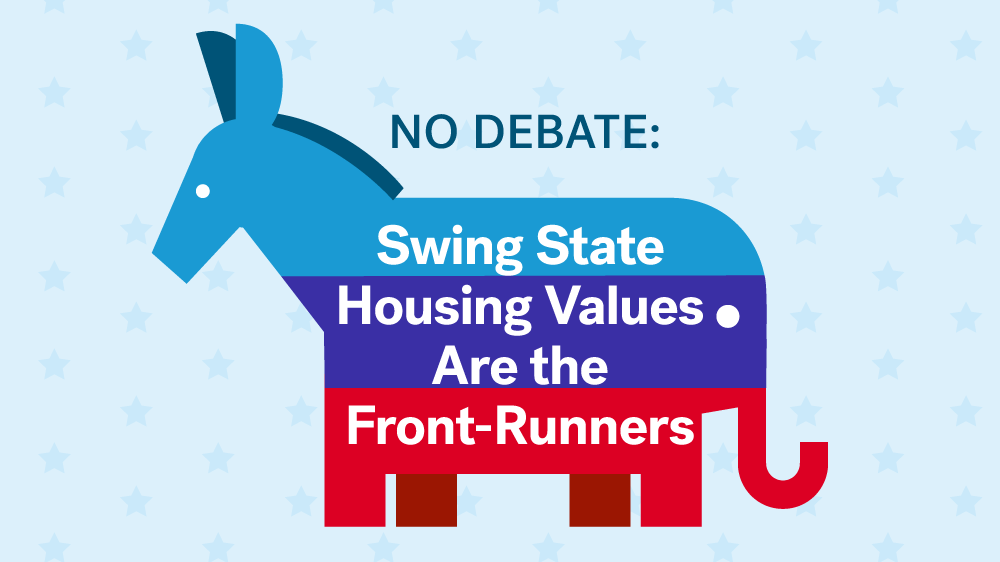Achieving prosperity. That’s one of the three big topics to be discussed Monday night in Hempstead, N.Y., when Hillary Clinton and Donald Trump square off in the first of three presidential debates.
Sounds simple, but how do we define prosperity?
For the candidates, it’s easy. They want to win over enough voters in swing states to capture the White House.
And for most Americans, buying a home is the biggest investment they will make in their lifetimes. So, it follows that most of us measure at least a part of our prosperity by the value of our homes.
So how have home values performed in battleground states?
The eight states identified as key to swinging this year’s presidential election – Arizona, Florida, Georgia, New Hampshire, North Carolina, Ohio and Pennsylvania — have seen home values rise more 30% since the end of 2011. That’s more than so-called red states (18%) that favor Republican candidates and blue states (29%) that consistently support Democratic candidates.
Among those battlegrounds, Nevada, (78%), Arizona, (53%), and Florida, (51%), have seen the sharpest increases during the last five years – a period that roughly coincides with the last presidential election and the bottom of the housing crash.
| Swing State | Increase Since Jan. 2012 | Electoral Votes |
|---|---|---|
| Nevada | 78% | 6 |
| Arizona | 53% | 11 |
| Florida | 51% | 29 |
| SWING states | 30% | 119 |
| BLUE states | 29% | 249 |
| Georgia | 28% | 16 |
| RED states | 18% | 170 |
| New Hampshire | 15% | 4 |
| North Carolina | 11% | 15 |
| Ohio | 13% | 18 |
| Pennsylvania | 8% | 20 |
Does Trump Have a Housing Advantage?
As always, the data comes with caveats. For instance, the dramatic value in home growth in Nevada is as much a result of inflated housing prices reached before the recession in 2008. Prices in that state had further to fall and their recovery to normalcy can look exaggerated when compared to a relatively stable state such as Ohio.
Monday’s debate, moderated by NBC’s Lester Holt, may go a long way toward determining which candidate voters believe will help the economy and, perhaps, push housing prices – and their own sense of prosperity – higher.
When asked in June what would likely happen to home prices if either Trump or Clinton were elected, 39% of Americans said prices would rise a little or a lot if Trump was elected compared to 29% for Clinton. Americans who identified as Independents also were more likely, 34% to 28%, to foresee rising housing prices under Trump than Clinton.
Something else to consider: both candidates have a record of drawing support from voters whose home values remain relatively flat. During the primary season both candidates performed better in counties where housing prices had risen only slightly since deepest part of the recession – when unemployment was at its highest level – the second quarter of 2009.
And finally, though blue states tend to have high housing values, it’s the swing states where housing prices have risen the most.
How will it all play out? The answer depends on how much pocketbook issues influence how the electorate votes. If it is, as former Bill Clinton adviser James Carville famously said, “the economy, stupid,” then swing state voters probably aren’t as upset with the status quo. After all, they’ve done pretty well.
If other issues such as foreign policy, health care, and immigration are more on voters minds then each candidate has his or her strengths.
Ultimately, we may never be sure of the answer even when the last candidate is standing on Nov. 9.
Methodology
Median home value estimates come from internal data. Group home values are averages of individual state medians weighted by the number of housing units in each state based on the 2010 census.


